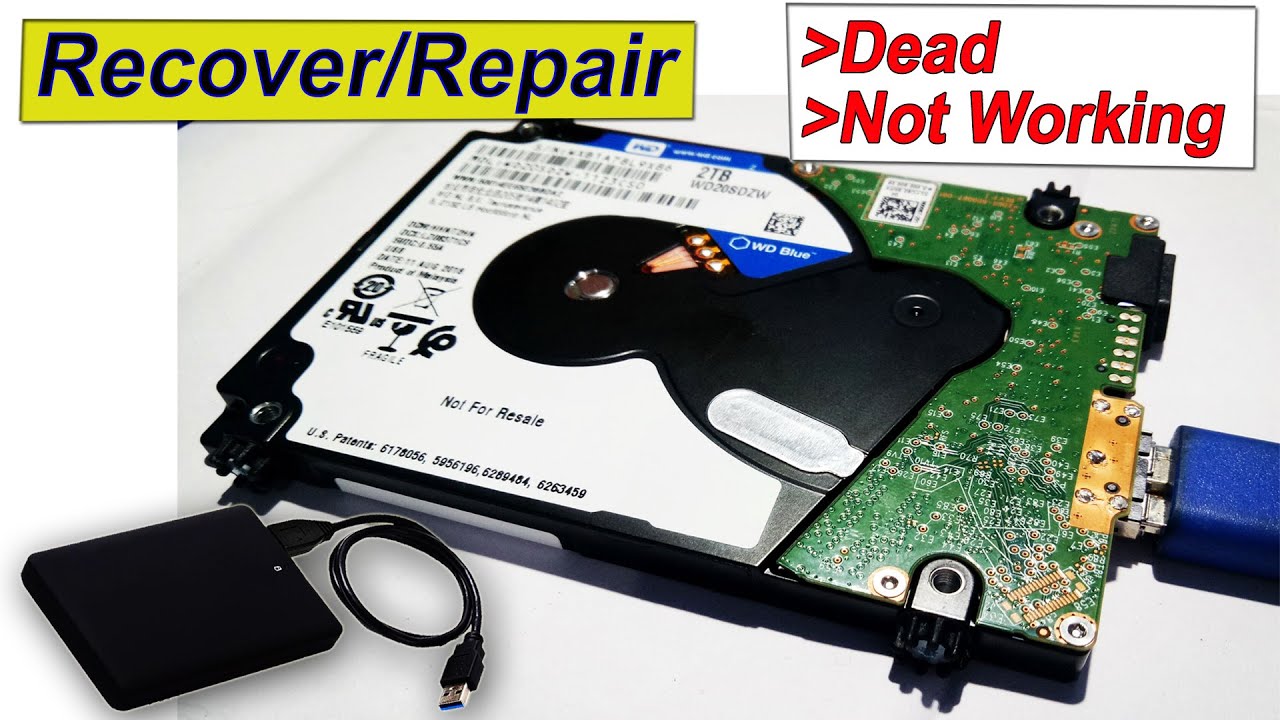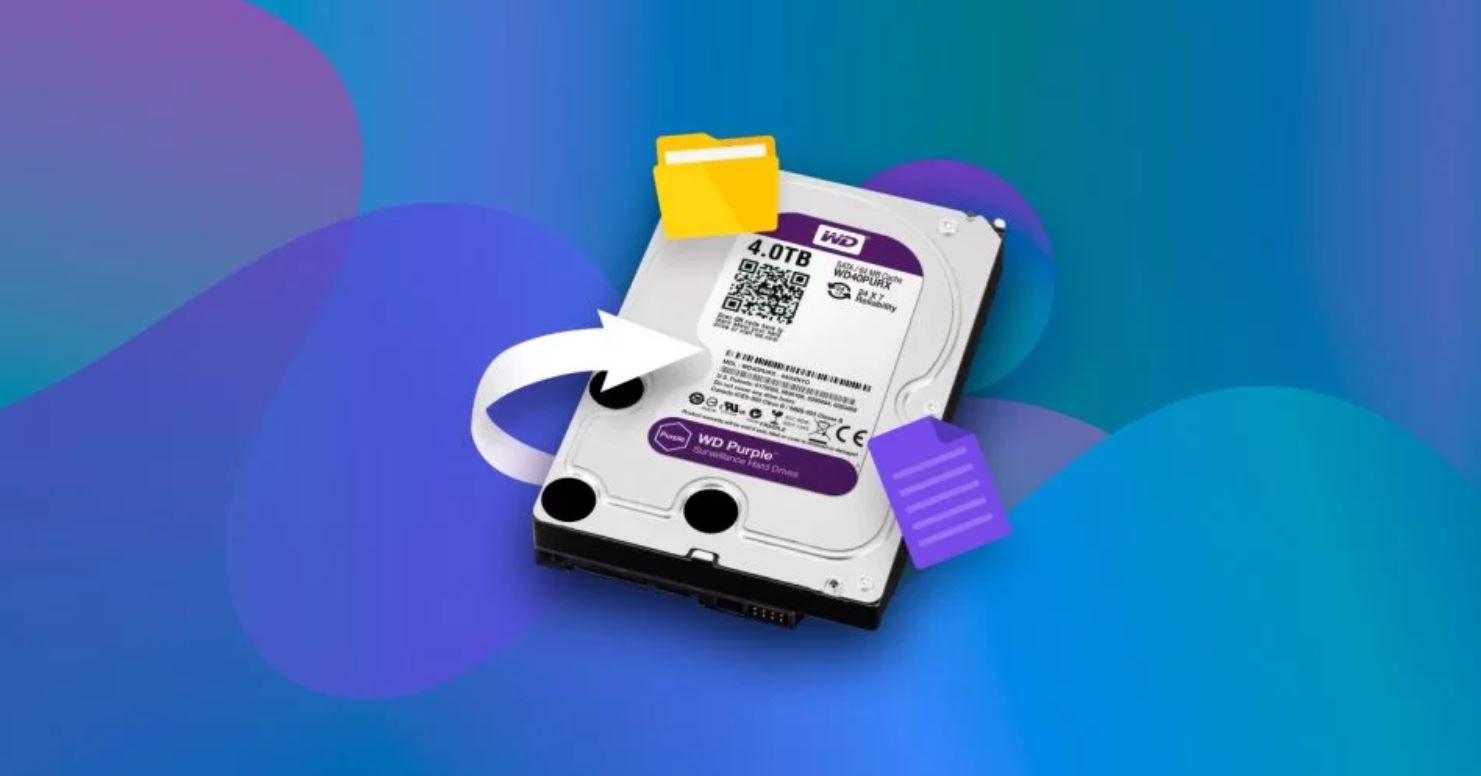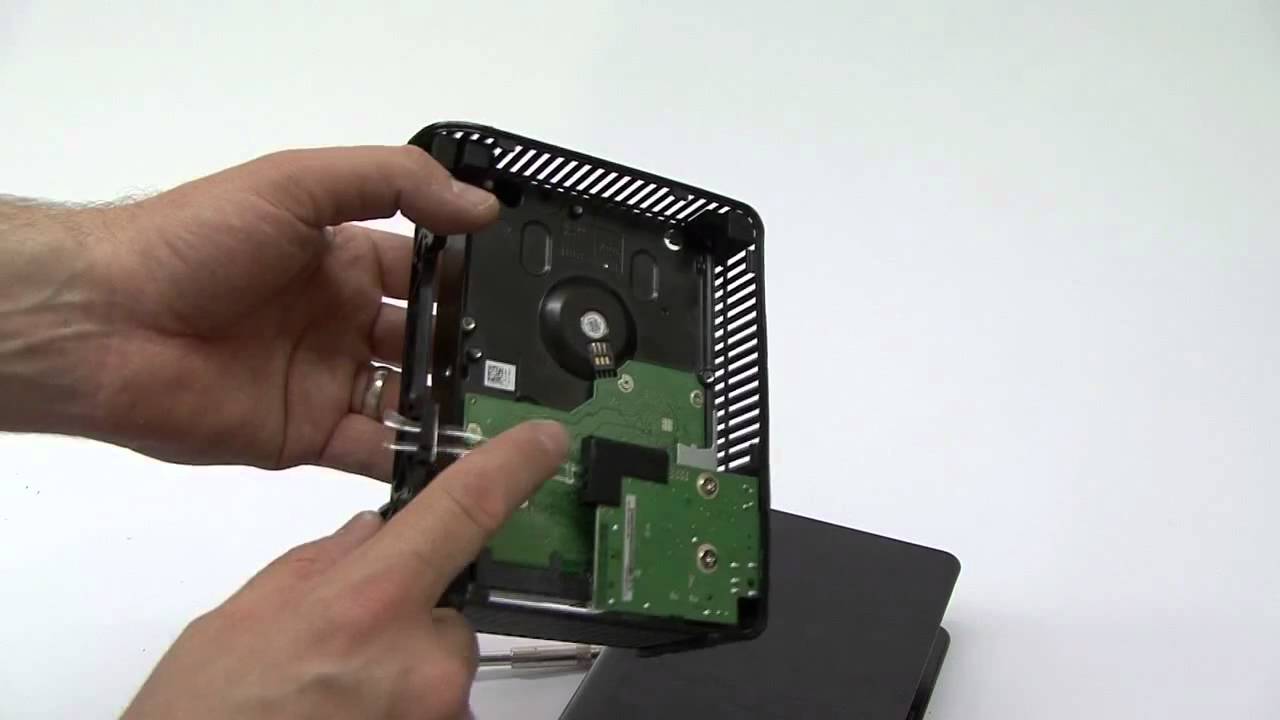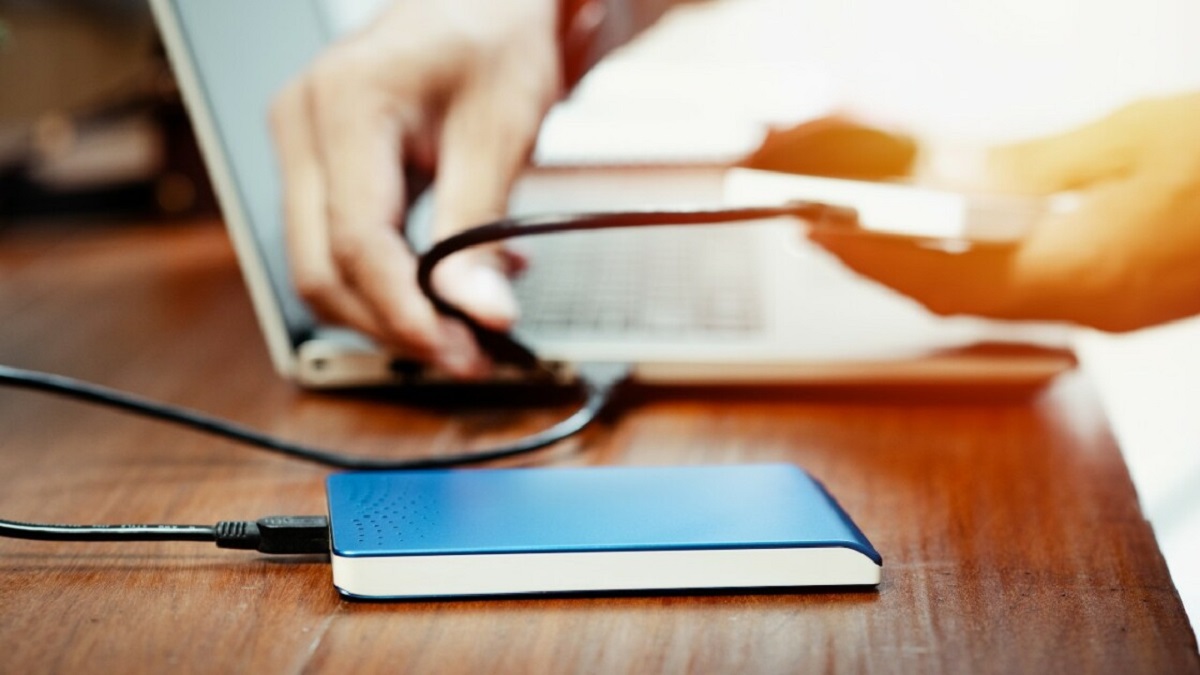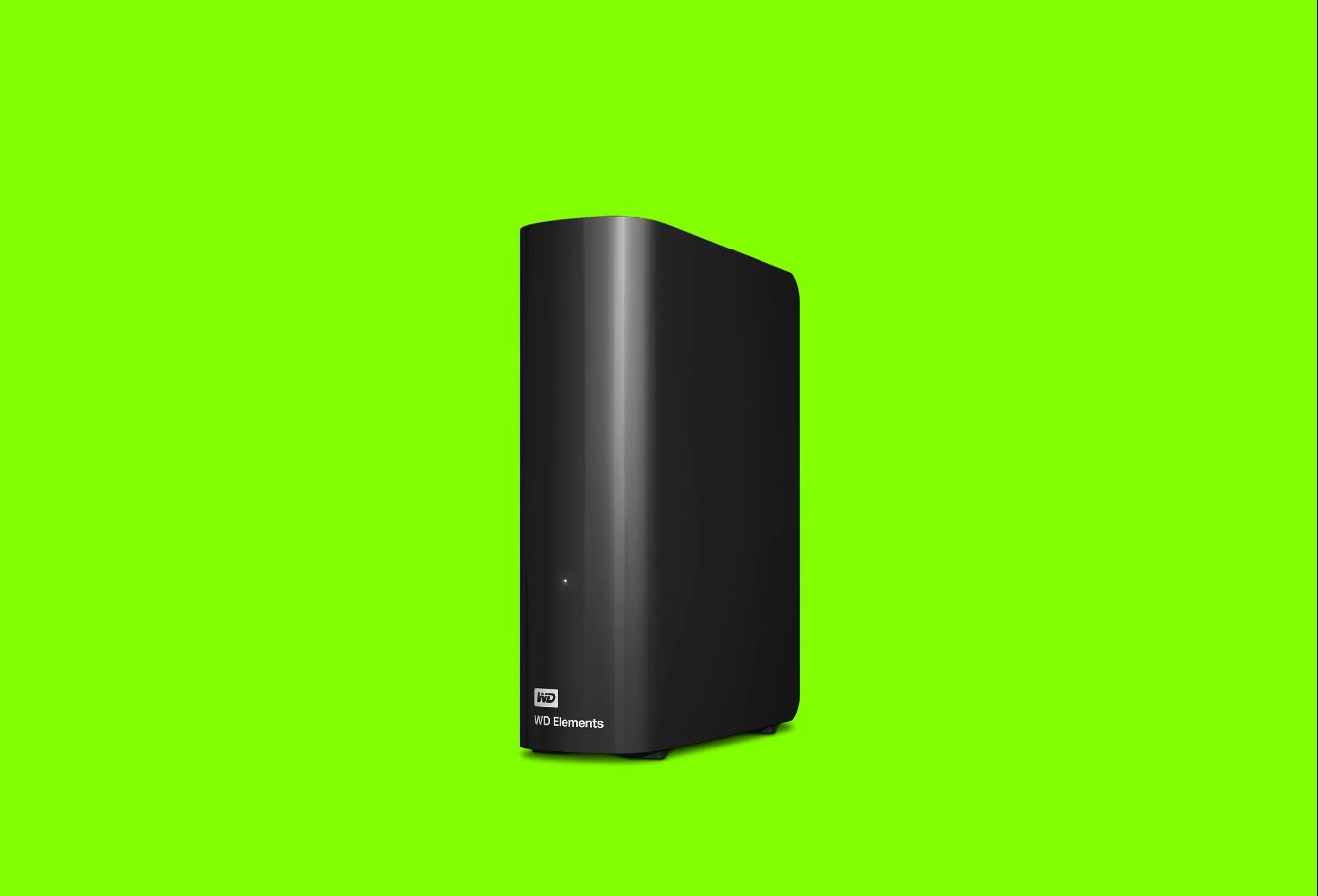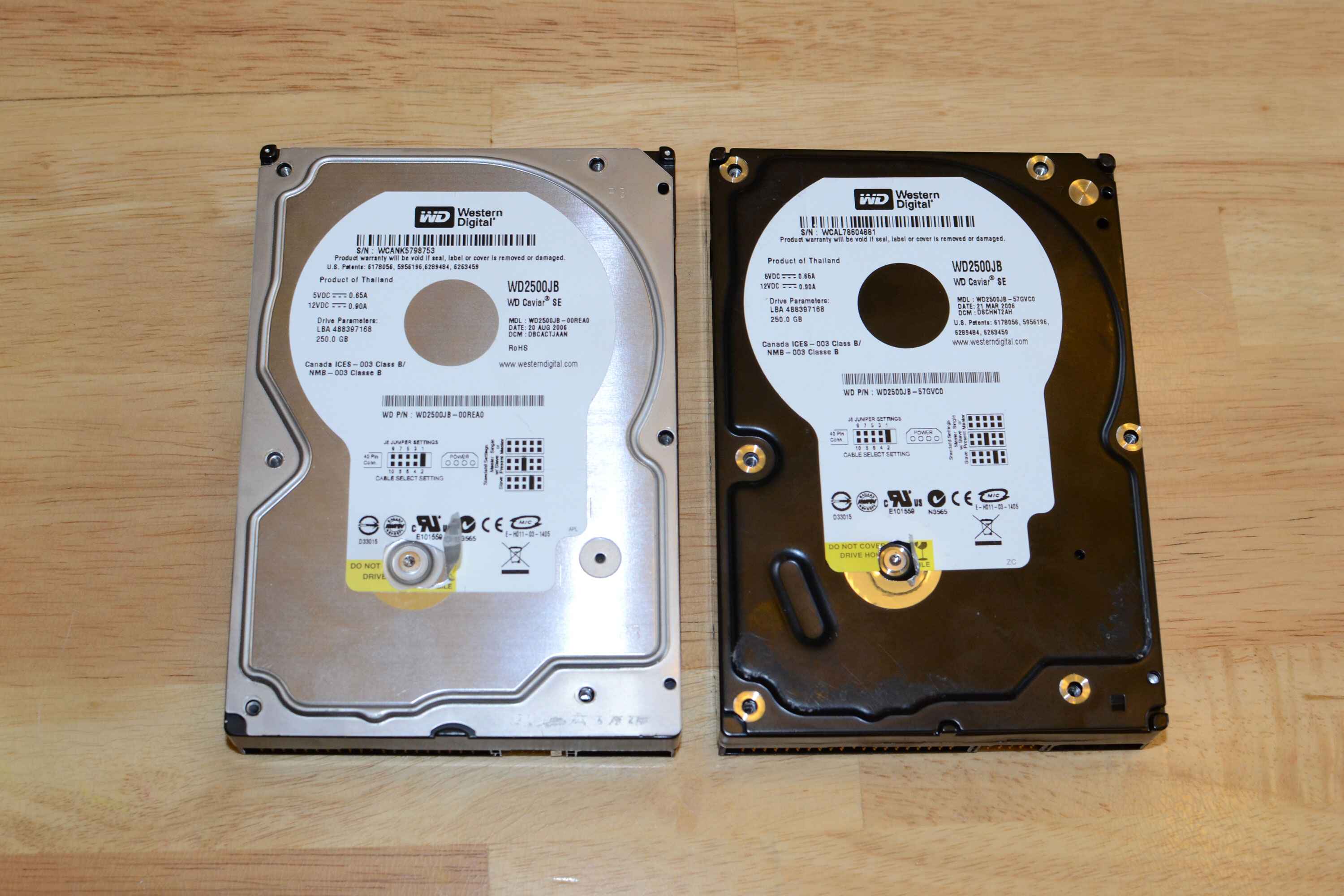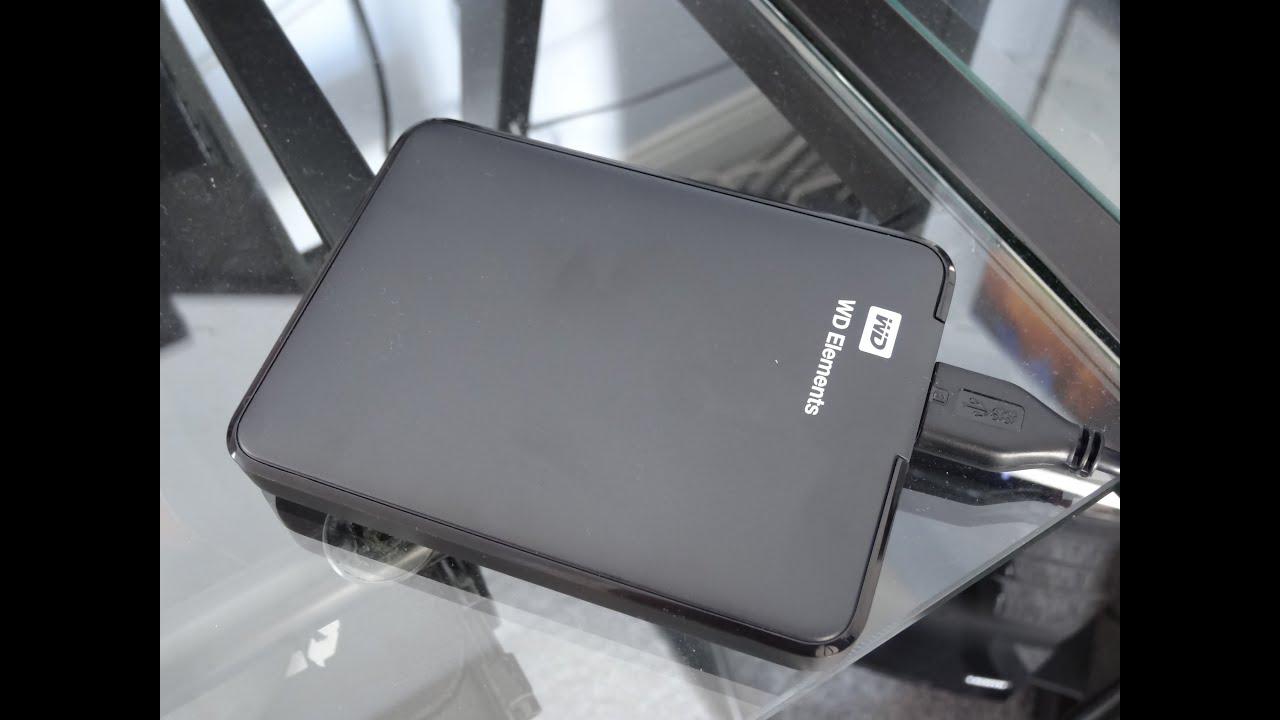Introduction
Welcome to the world of WD external hard drives! These portable storage devices offer convenience and reliability for storing and accessing your important files. However, like any technology, they can sometimes encounter issues. Whether it’s a drive not being recognized, data corruption, or slow performance, these problems can be frustrating to deal with.
In this article, we will discuss some common problems that you may encounter with your WD external hard drive and guide you through troubleshooting steps to help you resolve them. From checking the basics to running disk checks and formatting the drive, we’ll cover a range of solutions to get your WD external hard drive back up and running smoothly.
It’s worth noting that the steps outlined here are general troubleshooting techniques that can be applied to most WD external hard drives. However, the specific steps may vary slightly depending on the model and operating system you’re using. Always refer to the user manual and documentation provided with your WD external hard drive for model-specific instructions.
Before we dive into the troubleshooting steps, it’s important to note that some issues with WD external hard drives may require professional assistance. If you’re unsure or uncomfortable performing the troubleshooting steps yourself, it’s always a good idea to reach out to WD support or consult a professional technician.
Now, let’s get started with the common problems you may encounter with your WD external hard drive, and the steps you can take to resolve them!
Common problems with WD external hard drives
While WD external hard drives are known for their reliability, they can experience several common issues that can disrupt your data storage and retrieval. Understanding these problems will help you identify and troubleshoot the specific issue you’re facing. Here are some of the most common problems encountered with WD external hard drives:
- Drive not being recognized: One of the most frustrating issues is when your computer fails to detect your WD external hard drive. This can be caused by faulty USB ports, outdated drivers, or connection problems.
- Data corruption: Another common problem is data corruption. This can occur due to improper ejection, file system errors, or malware infections. As a result, you may not be able to access or retrieve your important files from the drive.
- Slow performance: If you notice that your WD external hard drive has become sluggish, it could be a sign of fragmented files, insufficient free space, or outdated firmware. Slow performance can hinder your productivity and make file transfers a time-consuming task.
- Clicking or beeping sounds: Unusual clicking or beeping sounds coming from your WD external hard drive can indicate mechanical issues. These sounds usually signify that the drive’s internal components are damaged or failing.
- File system formatting issues: In some cases, your WD external hard drive may have problems with the file system format, resulting in compatibility issues with your computer. This can prevent you from accessing or writing files to the drive.
These common problems can be incredibly frustrating, but the good news is that most of them can be resolved through troubleshooting steps. In the following sections, we will explore the solutions to these issues and help you get your WD external hard drive back to working condition.
Troubleshooting steps
When encountering problems with your WD external hard drive, it’s essential to follow a systematic approach to troubleshooting. By following these steps, you can identify and resolve the issue effectively. Here are some troubleshooting steps to try:
- Checking the basics: Start by ensuring that all cables and connections are secure. Try using a different USB port or cable to rule out any issues with the current setup.
- Updating the drive drivers: Outdated or incompatible drivers can cause problems with your WD external hard drive. Visit the WD website and download the latest drivers for your specific model and operating system.
- Running a disk check: Use the built-in disk check tool in your operating system to scan and repair any file system errors. This can help resolve issues such as data corruption and file access problems.
- Formatting the drive: If all else fails, formatting the drive can be a last-resort solution. However, be aware that this will erase all data on the drive, so make sure to back up any important files before proceeding.
- Reinstalling the device drivers: Uninstall the device drivers for your WD external hard drive and then reinstall them. This can help resolve issues related to driver conflicts or corrupted driver files.
- Using data recovery software: If you’re unable to access or retrieve data from your WD external hard drive, data recovery software can be a potential solution. There are various reliable software options available that can help you recover lost or corrupted files.
- Contacting WD support: If none of the above steps resolve your problem, it’s time to reach out to WD support. They have a dedicated team of professionals who can provide further assistance and guidance specific to your WD external hard drive model.
Remember, troubleshooting steps may vary depending on the specific issue you’re facing and the model of your WD external hard drive. It’s always a good idea to refer to the user manual or the WD support website for detailed instructions.
Checking the basics
When encountering issues with your WD external hard drive, it’s important to start with the basics. Often, the problem can be resolved by checking the following simple yet crucial elements:
1. Ensure a secure connection: First, verify that the USB cable connecting your WD external hard drive to your computer is securely plugged in on both ends. Try using a different USB port to rule out any issues with the current port. If possible, use a different USB cable to eliminate the possibility of a faulty cable.
2. Power source and adapter: Confirm that your WD external hard drive is receiving power. If it’s powered through an AC adapter, ensure that the adapter is properly connected and functioning. If the drive is USB-powered, try connecting it to a different USB port or use a powered USB hub to eliminate power-related issues.
3. Test on another computer: To determine if the issue is specific to your computer, connect your WD external hard drive to another computer and see if it is recognized. If it works on another computer, it indicates a potential problem with your computer’s hardware or software. Focus on troubleshooting your computer rather than the drive itself.
4. Check for physical damage: Carefully inspect your WD external hard drive for any signs of physical damage, such as bent connectors or a damaged casing. Any physical damage can hinder the drive’s functionality. If you find any issues, it’s best to contact WD support for further guidance.
5. Restart your computer: Sometimes, a simple restart can resolve connection issues between your computer and the WD external hard drive. Restart your computer and try connecting the drive again to see if it is recognized.
6. Update your operating system: Ensure that your computer’s operating system is up to date. Outdated software can cause compatibility issues with external devices, including WD external hard drives. Check for updates and install any available updates to ensure optimal compatibility.
By checking these basic elements, you can eliminate potential simple causes of problems with your WD external hard drive. If the issue persists, move on to the next troubleshooting step.
Updating the drive drivers
Outdated or incompatible drivers can often be the root cause of issues with your WD external hard drive. To ensure smooth communication between your drive and computer, it’s important to keep the drive drivers up to date. Here’s how you can update the drive drivers:
1. Visit the WD website: Go to the official WD website and navigate to the support section. Look for the “Downloads” or “Drivers” page, where you can find the latest drivers for your specific WD external hard drive model.
2. Locate your specific model: In the downloads or drivers section, locate your WD external hard drive model. You may need to enter the model number or select the appropriate product category to find the relevant drivers.
3. Download the latest drivers: Once you’ve located your model, download the latest drivers compatible with your operating system. Be sure to choose the correct drivers to avoid any potential compatibility issues.
4. Install the drivers: After downloading the drivers, locate the installation file and run it on your computer. Follow the on-screen instructions to complete the driver installation process. It’s recommended to close any other programs or applications during the installation to avoid any conflicts.
5. Restart your computer: After installing the updated drivers, restart your computer to allow the changes to take effect. This will ensure that your operating system properly recognizes and communicates with your WD external hard drive.
Note: In some cases, the driver installation process may involve connecting the WD external hard drive to your computer during installation. Follow the instructions provided by WD to complete the driver update successfully.
Updating the drive drivers can often resolve compatibility and communication issues, allowing your WD external hard drive to be recognized and function properly. If the problem persists, proceed to the next troubleshooting step.
Running a disk check
Running a disk check can help identify and resolve file system errors that may be causing problems with your WD external hard drive. Here’s how you can perform a disk check:
1. Open File Explorer (Windows) or Finder (Mac): Navigate to the file management application on your computer, such as File Explorer in Windows or Finder on Mac.
2. Connect your WD external hard drive: Ensure that your WD external hard drive is properly connected to your computer. If it’s already connected, disconnect and reconnect it to make sure it’s recognized by the operating system.
3. Locate your WD external hard drive: In the file management application, locate your WD external hard drive. It should be listed among the available drives or devices.
4. Right-click on the drive: On Windows, right-click on the WD external hard drive and select “Properties” from the context menu. On Mac, control-click on the drive and select “Get Info.”
5. Run the disk check utility: In the properties or info window, look for the option to run a disk check or verify the disk. This utility may be named differently depending on your operating system. Click on the appropriate button or option to start the disk check process.
6. Follow the on-screen instructions: Depending on your operating system, you may be prompted to select specific disk check options, such as checking for errors or repairing file system issues. Follow the on-screen instructions and let the disk check utility complete its scan and repair process.
7. Wait for the process to finish: The disk check process may take some time, especially if there are a large number of files or issues to be addressed. Be patient and allow the process to complete, even if it appears to be taking a while.
8. Restart your computer: After the disk check process is complete, restart your computer to ensure that any changes made during the scan are applied and properly integrated into the operating system.
A disk check can help fix file system errors and improve the overall health and performance of your WD external hard drive. If the issue persists, proceed to the next troubleshooting step.
Formatting the drive
If none of the previous troubleshooting steps have resolved the issue with your WD external hard drive, formatting the drive may be an effective solution. Formatting erases all data on the drive and restores it to its original state. Here’s how you can format your WD external hard drive:
1. Backup your data: Before proceeding with formatting, it’s crucial to back up any important files or data stored on your WD external hard drive. Formatting will erase all data on the drive, so make sure you have a copy of your important files on another storage device or location.
2. Open Disk Management (Windows) or Disk Utility (Mac): On Windows, open the Disk Management utility by right-clicking on the Start button, selecting “Disk Management” from the context menu, and locating your WD external hard drive in the list of drives. On Mac, open Disk Utility by going to Applications -> Utilities -> Disk Utility and selecting your WD external hard drive from the sidebar.
3. Select the WD external hard drive: Once the Disk Management or Disk Utility is open, select your WD external hard drive from the list of available drives. Double-check to ensure that you’ve selected the correct drive to avoid formatting the wrong device.
4. Choose the formatting option: In Disk Management (Windows), right-click on the WD external hard drive and select “Format.” Choose the desired file system format, such as NTFS or exFAT, and assign a drive name or letter. In Disk Utility (Mac), click on the “Erase” tab, choose the desired file system format, and give your WD external hard drive a new name.
5. Start the formatting process: After selecting the formatting options, confirm your choices and start the formatting process. Depending on the size of your WD external hard drive, formatting may take some time. Be patient and let the process complete.
6. Verify the formatting: Once the formatting is complete, your WD external hard drive should be ready to use. Verify that the formatting was successful by connecting the drive to your computer and ensuring it is recognized in the file management application.
Formatting your WD external hard drive can resolve persistent issues and provide a fresh start for your drive. Remember to restore your backed-up files to the newly formatted drive and continue using it with improved performance.
Reinstalling the device drivers
If you’re still experiencing issues with your WD external hard drive, reinstalling the device drivers can help resolve any conflicts or corrupted files that may be causing the problem. Here’s how you can reinstall the device drivers:
1. Uninstall the existing device drivers: Start by uninstalling the current device drivers for your WD external hard drive. On Windows, open the Device Manager by right-clicking on the Start button and selecting “Device Manager.” Expand the “Disk drives” section, right-click on your WD external hard drive, and select “Uninstall device.” On Mac, go to Applications -> Utilities -> Disk Utility, select your WD external hard drive, and click on the “Unmount” button.
2. Disconnect and reconnect the drive: After uninstalling the device drivers, disconnect your WD external hard drive from your computer. Wait for a few seconds, and then reconnect the drive to your computer. This will trigger the driver installation process.
3. Automatic driver installation: In many cases, when you reconnect your WD external hard drive, the operating system will automatically reinstall the necessary drivers. Wait for the installation process to complete, and check if the drive is recognized and functioning as expected.
4. Manual driver installation: If the automatic driver installation doesn’t occur or if you prefer to manually update the drivers, visit the WD website and download the latest drivers for your specific WD external hard drive model. Follow the instructions provided by WD to install the drivers on your computer.
5. Restart your computer: After reinstalling the device drivers, restart your computer to ensure that the changes are applied and the new drivers are properly integrated into the operating system.
Reinstalling the device drivers can help resolve driver conflicts or issues and ensure proper communication between your WD external hard drive and your computer. If the problem persists, proceed to the next troubleshooting step.
Using data recovery software
If you’re unable to access or retrieve data from your WD external hard drive, using data recovery software can potentially help you recover lost or corrupted files. Here’s how you can use data recovery software:
1. Research and select a reliable data recovery software: There are various data recovery software options available, both free and paid. Research and choose a reputable and reliable software that is compatible with your operating system and supports WD external hard drives.
2. Install and launch the data recovery software: Follow the instructions provided by the software manufacturer to install the data recovery software on your computer. Once installed, launch the software to begin the recovery process.
3. Connect your WD external hard drive: Ensure that your WD external hard drive is connected to your computer and recognized by the operating system. The data recovery software should detect the connected drive as a target for the recovery process.
4. Select the recovery options: In the data recovery software, you will be presented with various recovery options. These may include quick scan, deep scan, or specific file recovery options. Choose the appropriate option based on your situation and preferences.
5. Start the recovery process: Initiate the recovery process by selecting the scan or recover option in the software. The software will scan your WD external hard drive for recoverable files and display them in the interface.
6. Preview and recover the files: Once the scan is complete, you can preview the recovered files. Carefully review and select the files you want to recover from your WD external hard drive. Choose a safe location on your computer or another storage device to save the recovered files.
7. Follow the software instructions: Each data recovery software may have its own specific steps or instructions. Follow the software’s instructions to complete the recovery process and ensure that the recovered files are saved successfully.
Important: It’s crucial to note that the success of data recovery depends on various factors, such as the condition of your WD external hard drive and the extent of data corruption. If the data recovery software is unable to recover your files, it may be necessary to consult a professional data recovery service.
Using data recovery software can be a helpful solution for retrieving lost or corrupted data from your WD external hard drive. However, prevention is always better than cure, so it’s important to regularly back up your important files to avoid potential data loss.
Contacting WD support
If you have tried all the previous troubleshooting steps and are still unable to resolve the issues with your WD external hard drive, it’s time to reach out to WD support for further assistance. Here are the steps to contact WD support:
1. Visit the WD support website: Go to the official WD website and navigate to the support section. Look for the “Contact” or “Support” page, which typically provides various options for reaching out to WD support.
2. Check for online resources: Before contacting support directly, explore the support website for helpful resources such as FAQs, articles, or community forums. Often, you can find answers to common issues or solutions that may resolve your problem.
3. Locate the contact information: If you couldn’t find a resolution for your issue through online resources, find the contact information for WD support. This may include a telephone number, email address, or a support ticket system.
4. Provide necessary information: When contacting WD support, be prepared to provide specific details about your WD external hard drive, the issues you’re experiencing, and the troubleshooting steps you have already taken. This will help the support team understand your situation and provide appropriate assistance.
5. Follow the support instructions: Once you have contacted WD support, follow their instructions on how to proceed. They may provide further troubleshooting steps to try, request additional information, or guide you through the warranty claim process if necessary.
6. Document your interactions: Keep a record of your interactions with WD support, including any case numbers, emails, or names of the support staff you communicate with. This can be helpful for reference purposes if you need to follow up or escalate the issue.
7. Maintain open communication: Stay in touch with WD support as they work on resolving your issue. Respond promptly to any requests for information or updates. This will help expedite the support process and ensure effective communication throughout.
WD support is dedicated to assisting customers and resolving issues related to their products. They have knowledgeable professionals who can provide guidance specific to your WD external hard drive model and help you find a solution to your problem.
Conclusion
Dealing with problems related to your WD external hard drive can be frustrating, but with the right troubleshooting steps, you can often resolve these issues and get your drive back in working order. Throughout this article, we’ve explored common problems that users may encounter and provided steps to troubleshoot and address these issues.
By checking the basics, updating the drive drivers, running a disk check, formatting the drive, reinstalling the device drivers, using data recovery software, and reaching out to WD support, you have a comprehensive toolkit to tackle various issues that may arise with your WD external hard drive.
It’s important to remember that prevention is key. Regularly backing up your important files and maintaining good drive maintenance practices can help prevent data loss and minimize the occurrence of issues with your WD external hard drive.
If you have exhausted all the troubleshooting steps and still cannot resolve the issue, don’t hesitate to reach out to WD support or consult a professional technician who can provide further assistance.
We hope that this article has provided you with valuable insights and solutions to address any problems you may encounter with your WD external hard drive. Remember to consult the user manual and the documentation specific to your WD external hard drive model for further guidance.
Stay tech-savvy and keep your WD external hard drive running smoothly!







